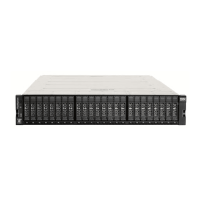data, and avoid over-sizing the system, it is important to assess the expected
compression ratio for the stored data. The Comprestimator command-line
host-based utility can be used for that purpose. For more information on
Comprestimator, see “Estimating compression savings using IBM Comprestimator
utility” on page 9.
The maximum effective capacity is reached when all the soft capacity has been
allocated to volumes (that is, 2 PB).
For more information on how to fine-tune soft and hard capacities, refer to
"Additional space utilization guidance" in the Real-time Compression with IBM
XIV Storage System Model 314 (REDP-5306) Redbook.
General compression saving guidelines
The best candidates for data compression are data types that are not already
compressed. Compressed data types are used by many workloads and
applications, such as databases, character/ASCII based data, email systems, server
virtualization, CAD/CAM, software development systems, and vector data.
The following examples represent workloads and data that are already compressed
and are, therefore, not good candidates for compression:
v Compressed audio, video, and image file formats:
– File types such as JPEG, PNG, MP3, medical imaging (DICOM), and MPEG2.
v Compressed user productivity file formats:
– Microsoft Office 2007 and newer formats (.pptx, .docx, .xlsx, etc.), PDF files,
Microsoft Windows executable files (.exe), etc.
v Compressed file formats:
– File types such as .zip, .gzip, .rar, .cab, and .tgz.
IBM Real-time Compression is best suited for data that has an estimated
compression savings of 25% or higher. There are various configuration items that
affect the performance of compression on the system. Different data types have
different compression ratios, and it is important to determine the compressible data
currently on your system.
The IBM Comprestimator, a host-based utility, can be used to estimate expected
compression rates. Compressing selectively, based on saving estimates, optimizes
both capacity use and performance. For more information on Comprestimator, see
“Estimating compression savings using IBM Comprestimator utility” on page 9.
The following table shows the compression ratio for common applications and data
types:
Table 4. Compression ratios for different data types
Data Types/Applications Compression Ratios
Productivity Up to 75%
Databases Up to 80%
CAD/CAM Up to 70%
Virtualization Up to 75%
Note: The required capacity reserve is equal to the size of the volume (not the
used capacity, but the volume size).
8 IBM XIV Gen3 281x-11x, 281x-21x, and 281x-314 Planning Guide

